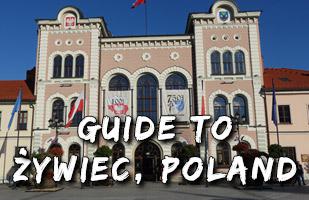About Budapest - basic info
Budapest (Hungarian pronunciation approximates to "boo-dah-pesht") is the capital city of Hungary. With a unique,
youthful atmosphere, a world-class classical music scene as well as a pulsating night life increasingly
appreciated among European youth and, last but not least, an exceptionally rich offering of natural thermal
baths, Budapest is one of Europe's most delightful and enjoyable cities. Due to its scenic setting and its
architecture it is nicknamed "Paris of the East".
In 1987 Budapest was added to the UNESCO World Heritage List for the cultural and architectural significance of
the Banks of the Danube, the Buda Castle Quarter and Andrássy Avenue.
- Currency
- Hungarian Forint
- Plug sockets
- Type C/F, 230V. details
- Language
- Hungarian
- How long to stay?
- At least 3. details
Getting to Budapest
By Plane
Most travellers will arrive via Budapest Franz Liszt International Airport (IATA: BUD).
Liszt Ferenc airport, also commonly referred to by the old name Ferihegy, is Hungary's largest airport
and it is located about 16km (10 miles) southeast of the city centre. It is a small airport by
international standards, easy to navigate, and well connected to the city by public transit.
To/From the airport
Public transport: The main public transit connection from the airport to the city is
to take bus 200E from the airport to metro M3 (blue line) end station 'Kőbánya-Kispest' (~25
minutes) and then to continue within the metro system (~20-30 minutes to city centre). One public
transport ticket for each leg. (See Get Around for ticket information.) The route is well marked
with signs and the bus runs frequently. The bus stops almost right next to the metro stop, but be
prepared to carry luggage up or down some stairs.
Since 8 July 2017 bus 100E [41] is operating between 'Deák tér' and 'Budapest Airport' (~40 minutes)
every thirty minutes. Tickets for the front-door bus are available for HUF 900 (approx. 2,90 EUR) at
BKK customer centers, cash desks, and ticket machines. 100E buses have a special design to make them
easy to recognize. The buses stops only in the driection of 'Deák Ferenc tér' at 'Kálvin tér' and
'Astoria', the driection of the airport only at 'Kálvin tér'. The two earliest bus in the driection
of the airport, before 5 a.m. stops at 'Astoria'.
It is also possible to take the 200E bus to the local Ferihegy train station and continue on the MAV
network to Nyugati station in Budapest or other rail destinations.
Taxi The only contracted taxi operator from Liszt Ferenc airport is Főtaxi [42].
Depending on your destination, the cost for a trip to Budapest will range from 5,000 to 10,000 HUF.
(Taxis now universally cost 450 HUF base price and 280 HUF for every kilometer. The inner city is
around 20 kilometers from Terminal 2.)
By coach/bus
Hungary’s national bus network is operated by Volán Association [45]. If you arrive to Budapest from
another Hungarian city, bus is often the best option. International bus routes are operated by
Eurolines.
Most connections run two or three times a week; connections to/from Austria and Slovakia run daily.
Orangeways offers cheap tickets to and from Austria, Czech Republic, Croatia, Germany, Netherlands,
Poland and Slovakia. Eurobusways do shared or private transfers from door to door from Budapest to many
destinations including Slovakia, Croatia, Poland, Austria, Slovenia, Romania.
By Train
Trains connect Budapest with almost all countries in central and eastern Europe. The main railway
stations (pályaudvar) are Keleti pályaudvar (Eastern Railway Station), Déli pályaudvar (Southern Railway
Station) and Nyugati pályaudvar (Western Railway Station). All are well connected to the metro system.
Most international trains arrive at Keleti, but check your particular itinerary.
Where to stay in Budapest?
I would recommend staying somewhere on the east side of the river (Pest), somewhere between the river and Oktogon, as you will be able to walk everywhere.
Budapest is quite a big city, but you can still get around on foot to most places.
Budapest Public Transport
Budapest's extensive public transit system is generally convenient and easy to use. Tourists can navigate most central areas by metro, but a few major destinations, particularly on the Buda side, are served by busses or trams.
Unfortunately, compared to similarly-sized cities in Western Europe, Budapest's public transit infrastructure is generally more worn-down, more outdated, dirtier, less reliable, and less comfortable.
Ticketing systems are not automated, many vehicles are insufficiently or not at all heated/air conditioned, and mechanical problems are frequent. Nonetheless, for getting from A to B, public transit is still a good option, and many routes frequented by tourists (e.g. the bus to the airport) are more modern and clean.
Bus
The dense bus network connects the suburban zones with several metro and train stations and the city center.
Trams
Tram Budapest's 25 tram lines offer a slower but more scenic way of getting around.
Trolley Bus
Trolley-bus Budapest's 13 trolley-bus lines run mostly in northeast and central Pest. Some of them pass through the City Park (Városliget) and cross Andrássy avenue (Andrássy út), giving you beautiful views while using this eco-friendly mode of transport. Line 70, connecting Kossuth Lajos tér M (Parliament) to the City Park (Városliget) also passes through the lively Nagymező utca, Budapest's "Broadway". The reason why the numbering starts with 70 is a historical one: The first trolley line started on Dec. 21, 1949, the 70th birthday of the Soviet dictator Stalin.
Underground Metro
The underground network consists of four lines, connecting several centrally located sights, railway and autobus stations with suburbs. The lines cross only at Deák tér station in central Pest with the exception of line 4. Many stations have been recently renovated and usually have small shops, bakeries and various other businesses.
Budapest Nightlife
Budapest offers plenty of places to drink, from cool and ultra-hip to rowdy and down-market. If you are in the mood for a particularly Hungarian experience, visit a so-called borozó (wine pub). These offer cheap yet tasty Hungarian wine on tap at outright hilariously low prices if you manage to find one outside the tourist circuit.
Hungary is famous for its wines produced at Balaton area and Eger. Among red wines the best are Kékfrankos, Egri Bikavér „Bulls Blood” and white wines the Szürkebarát and Chardonnay are popular. You should try not to miss out on the Hungarian spirit, palinka, made from fruits such as, plum, apricot, cherry or williams pears.
Unique Hungarian soft drinks to try are Traubi Szoda (a white grape soda) and Márka (a sour cherry soda).
The Main Budapest Tourist Attractions
See more about Budapest





